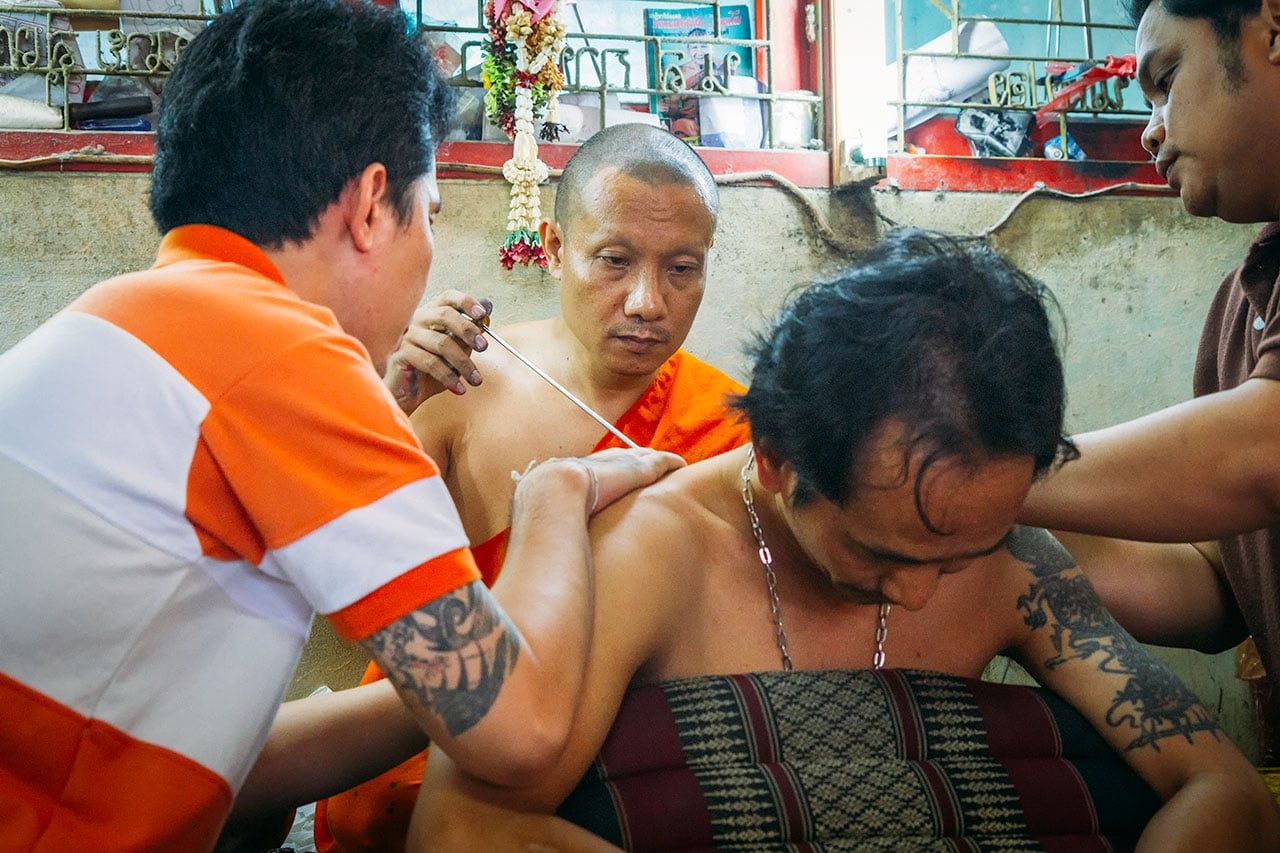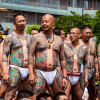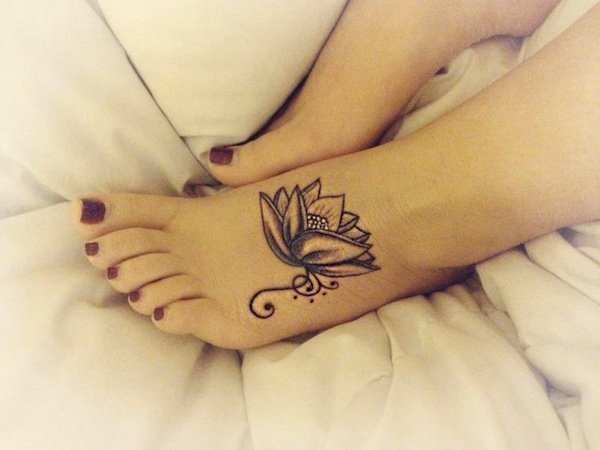Introduction to Sak Yant
Sak Yant, the ancient Thai art of sacred tattooing, is a sublime expression that intertwines deep spirituality with body craftsmanship. These tattoos are not mere decorations; they are incantations engraved on the skin, each filled with mantras and divine symbolisms that are believed to confer powers of protection and good luck on the wearer.
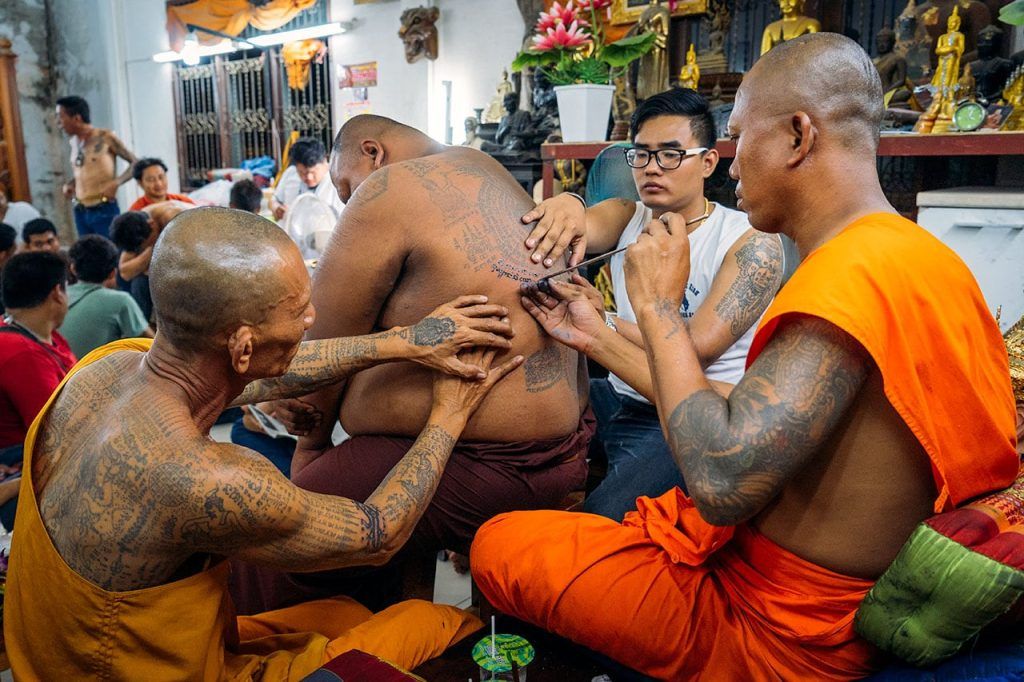
Historical Roots
Emerging from the ashes of the Khmer empire, the Sak Yant is a cultural heritage that dominates vast regions of Asia, mainly Thailand, Cambodia, Laos, Malaysia and parts of Vietnam and China. This empire, with its complex and pluralistic religiosity, gave rise to a tapestry of beliefs that is manifested in these mystical tattoos.
Religiosity and Rituals
Buddhist monks and Ajarns, guardians of this sacred art, continue the practice of tattooing using the "khem sak", a sharp stick that inserts the ink into the skin. The ritual of receiving a Sak Yant begins with offerings and prayers, in an act of respect and devotion. The spiritual nature of the Sak Yant distinguishes it from conventional tattoos, as each symbol, each line, carries a religious and cultural weight.
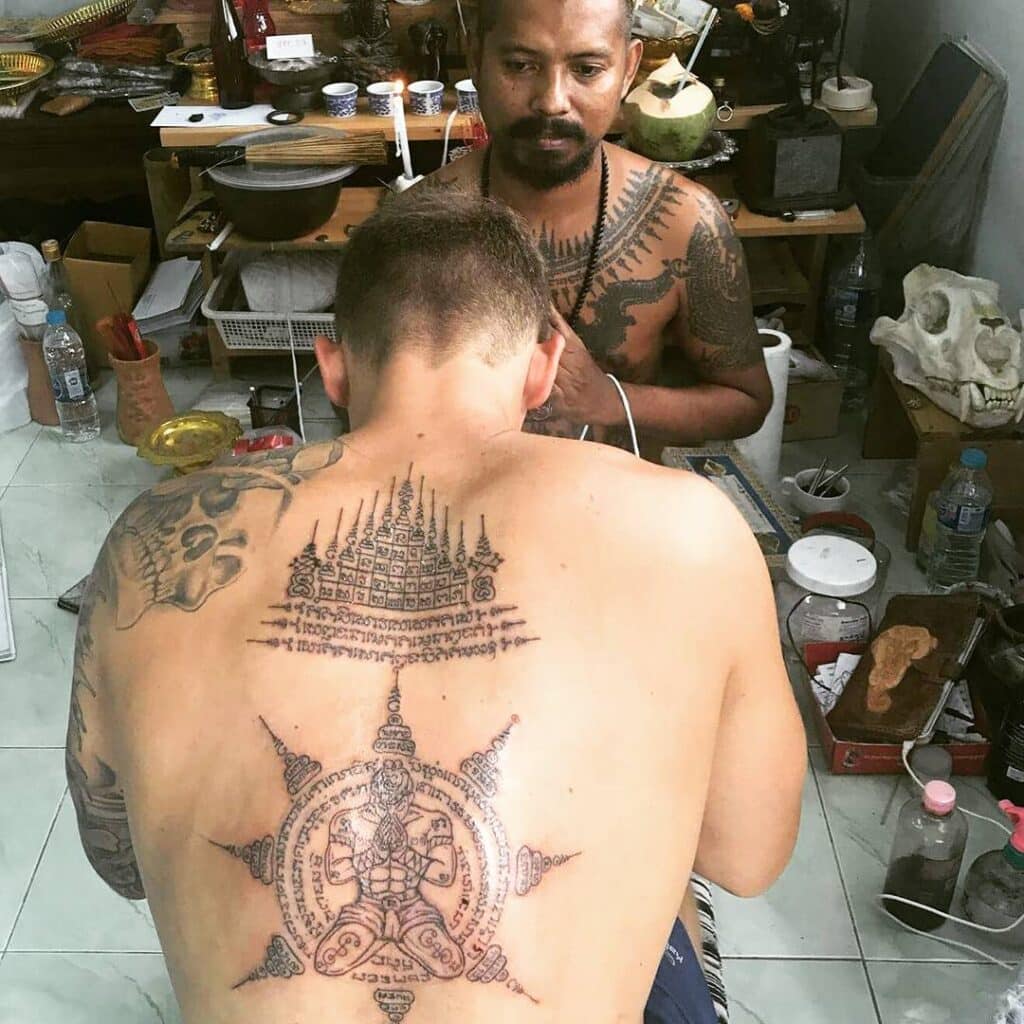
The Yantras and Their Meanings
The Sak Yant designs are called Yantras - geometric representations that symbolize spiritual and universal concepts. They are a set of shapes that incorporate mantras in Sanskrit or Khmer, and animal figures, representing a synergy between Buddhism, Hinduism and Animism.
Emblematic Designs
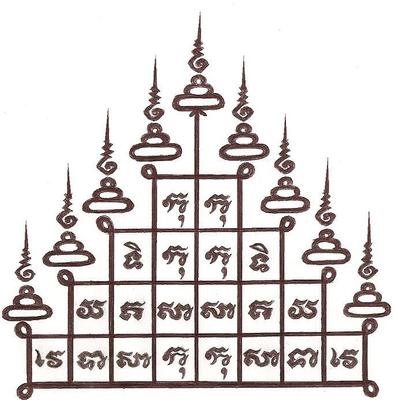
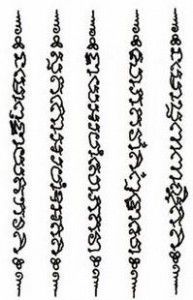
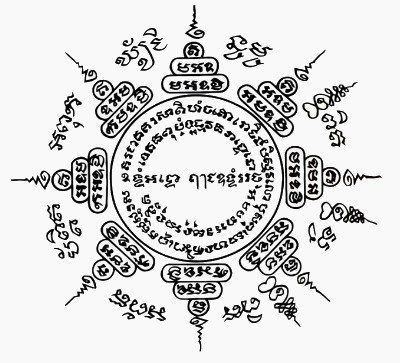
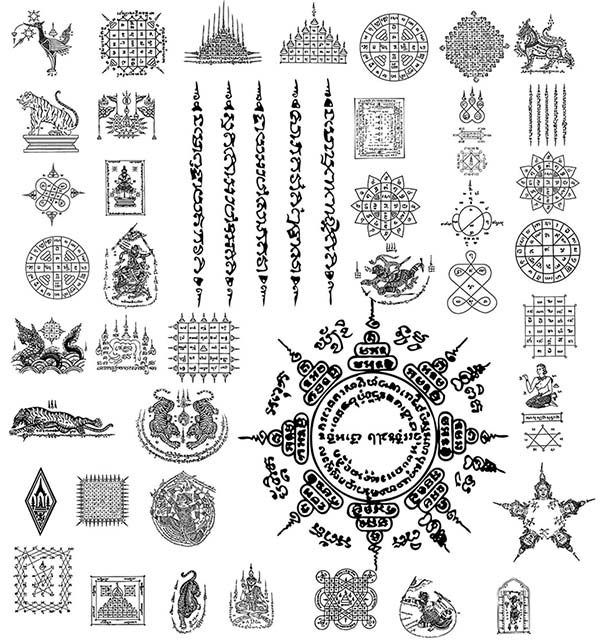
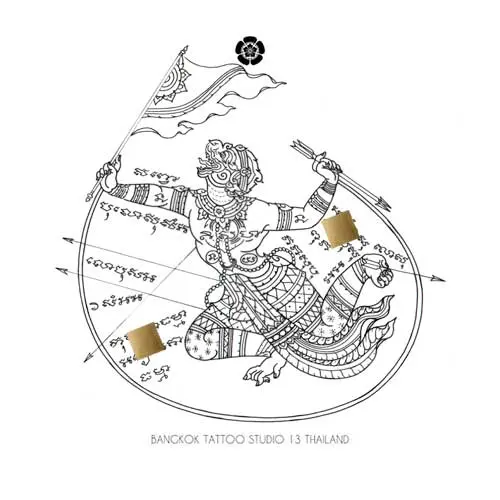
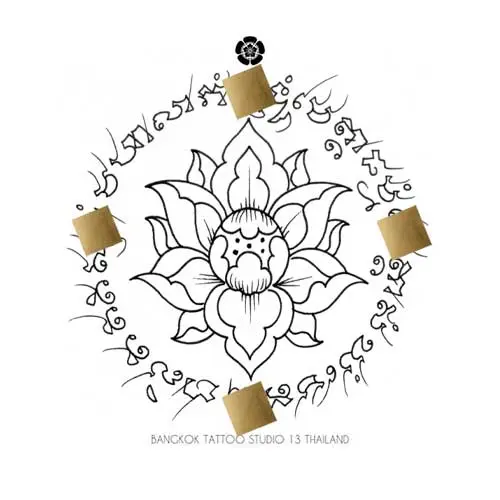
- Gao Yord (Nine Spikes): The master yant, invoking all-encompassing protection and divine powers.
- Hah Taew (Five Lines)A narrative of protection, success and attraction, popularized by figures such as Angelina Jolie.
- Paed Tidt (Eight Directions): A guide for the traveler, providing security in the four corners of the world and beyond.
- Suea (Tiger): A display of power and authority, favored by fighters and adventurers.
- Hanuman: The monkey god, synonymous with bravery and protection from evil.
The Temples and Their Masters
Places like Wat Bang Phra and the temples of Chiang Mai are famous for their Sak Yants. In Chiang Mai, women can find Ajarns who respect traditions but are no longer restricted by monastic rules.
The Modern Challenge
With globalization, Sak Yants face the challenge of preserving sanctity and safety. Hygiene conditions in traditional temples can be precarious, and the sharing of needles raises concerns. However, the practice has not yet been linked to disease transmission, possibly due to the fineness of the khem sak.
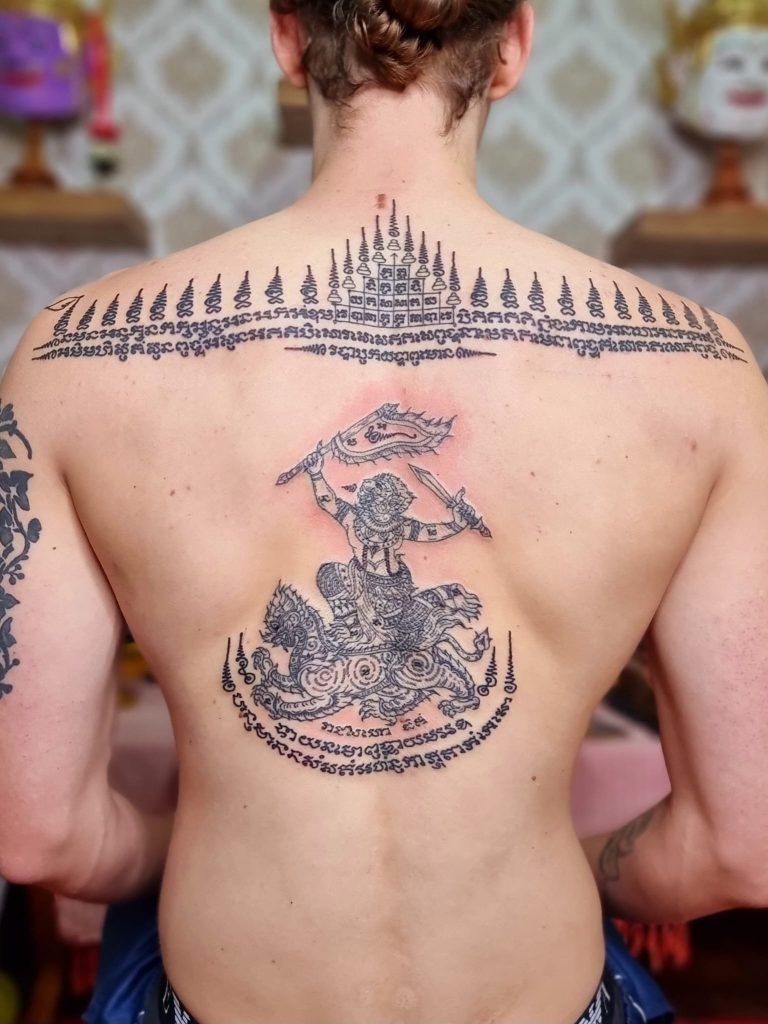
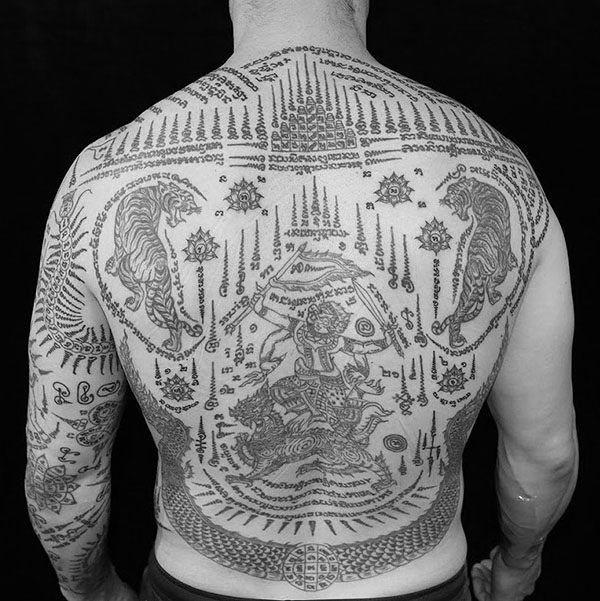
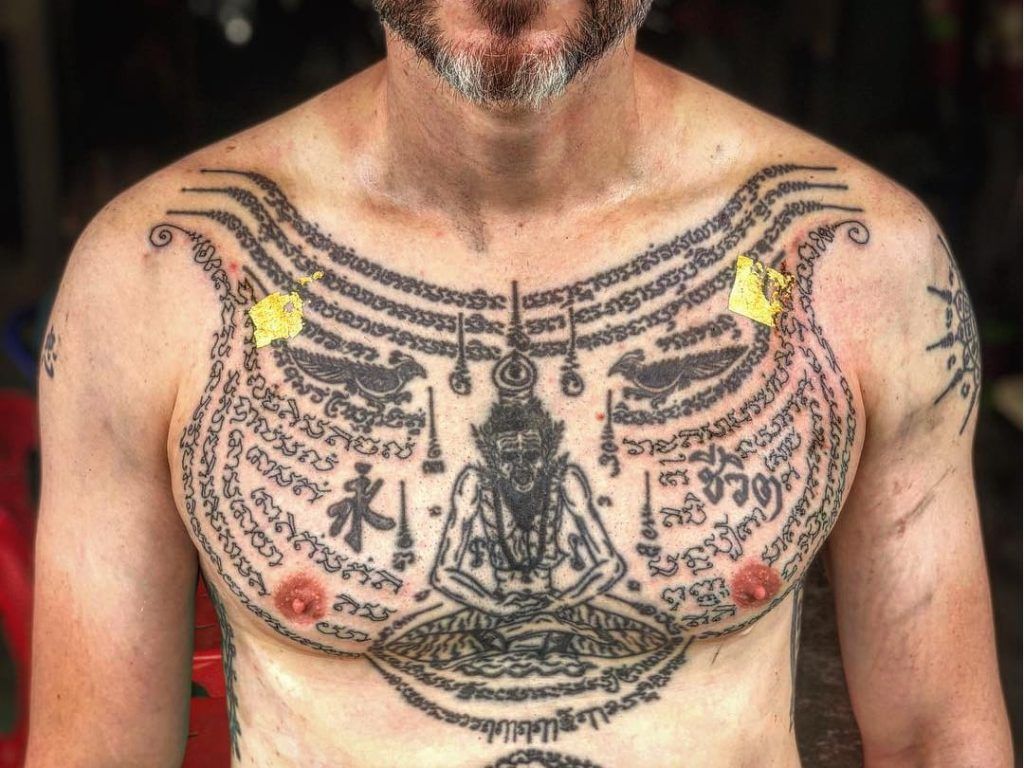
Sak Yant is more than ink on the skin; it's a spiritual journey, a connection with the divine, and a celebration of Southeast Asia's cultural heritage. With each needle stroke, Sak Yant wearers embrace an ancient tradition, carrying with them the blessings, prayers and teachings of their ancestors. Sak Yants are truly spiritual armor on life's journey.

